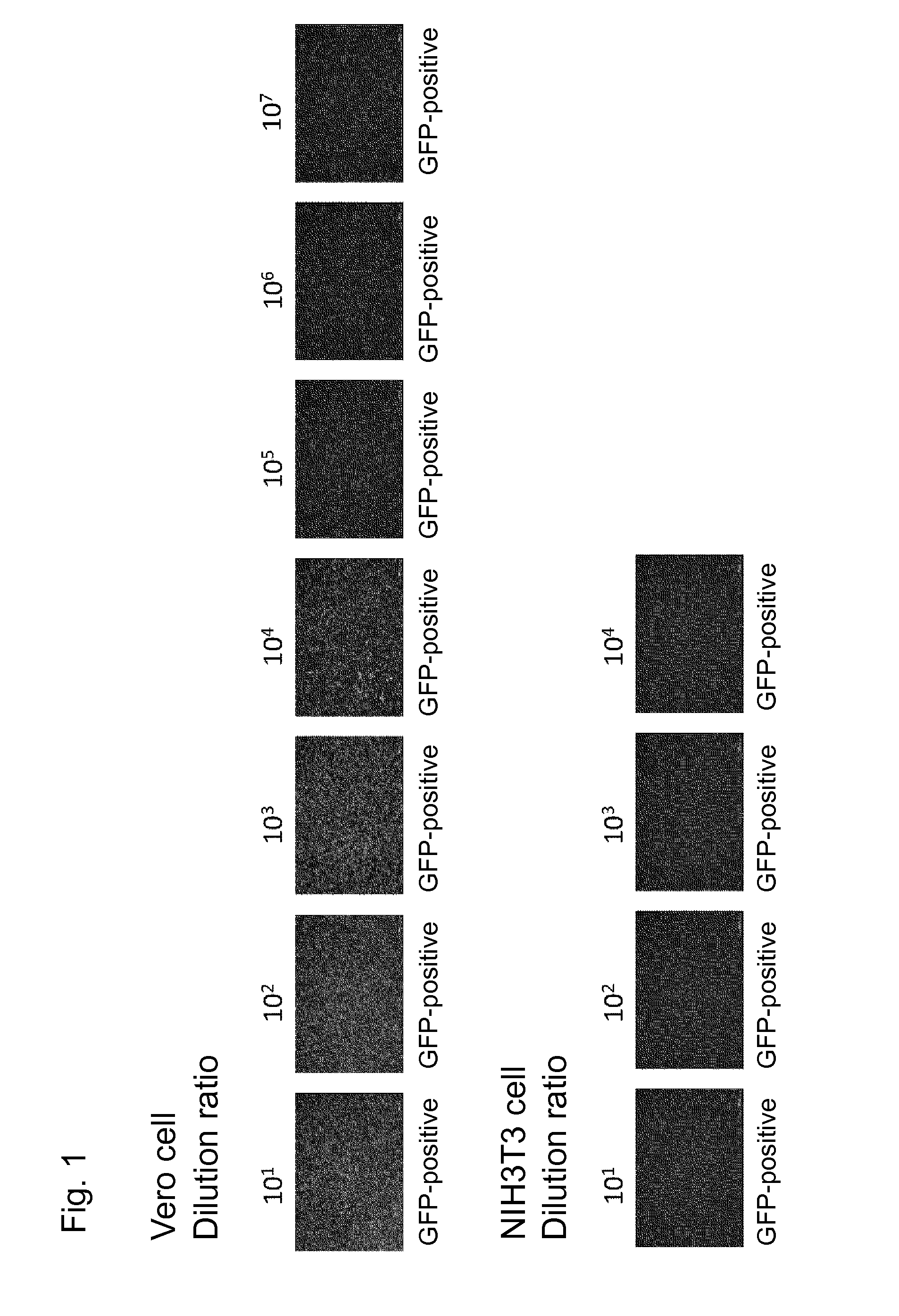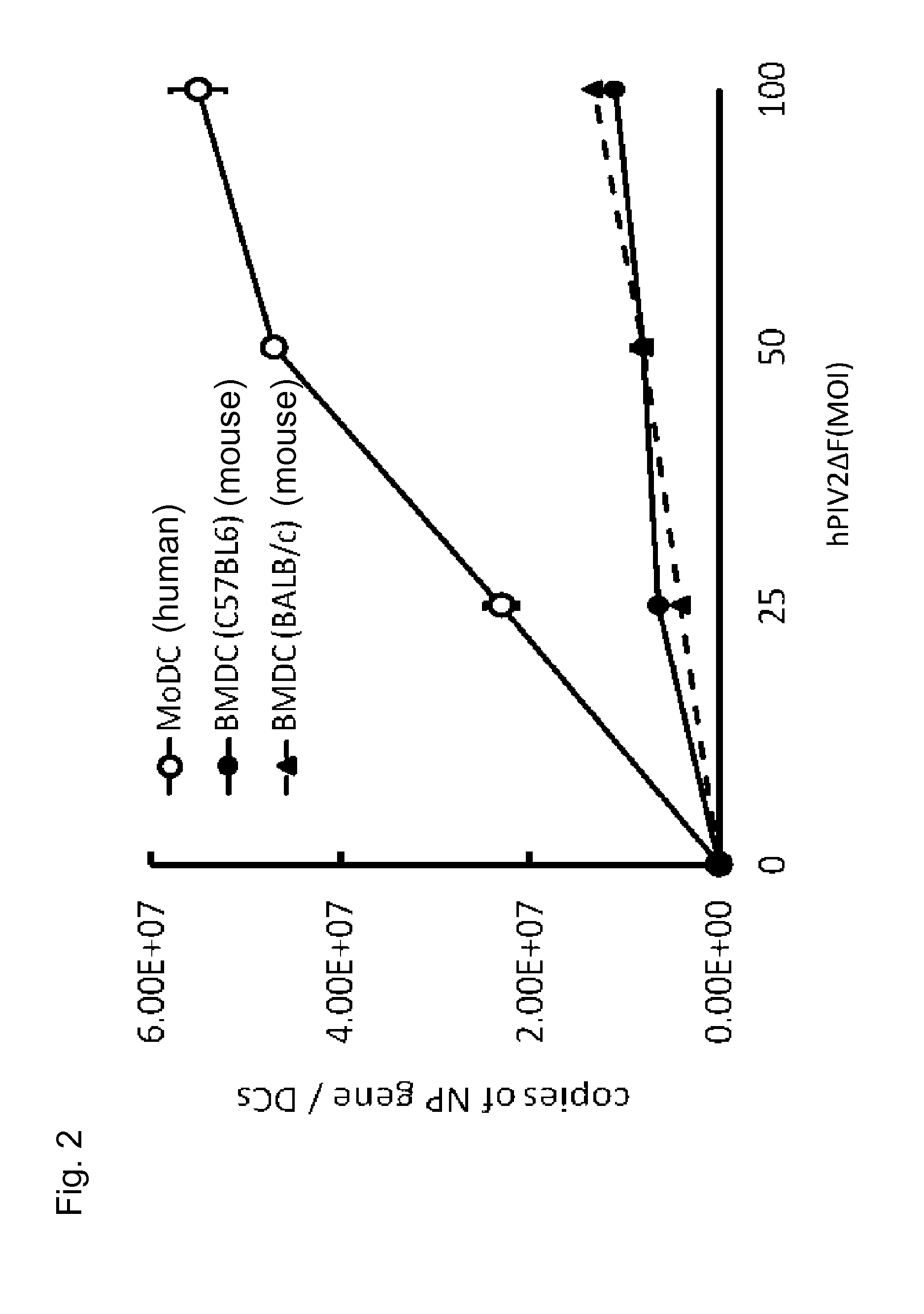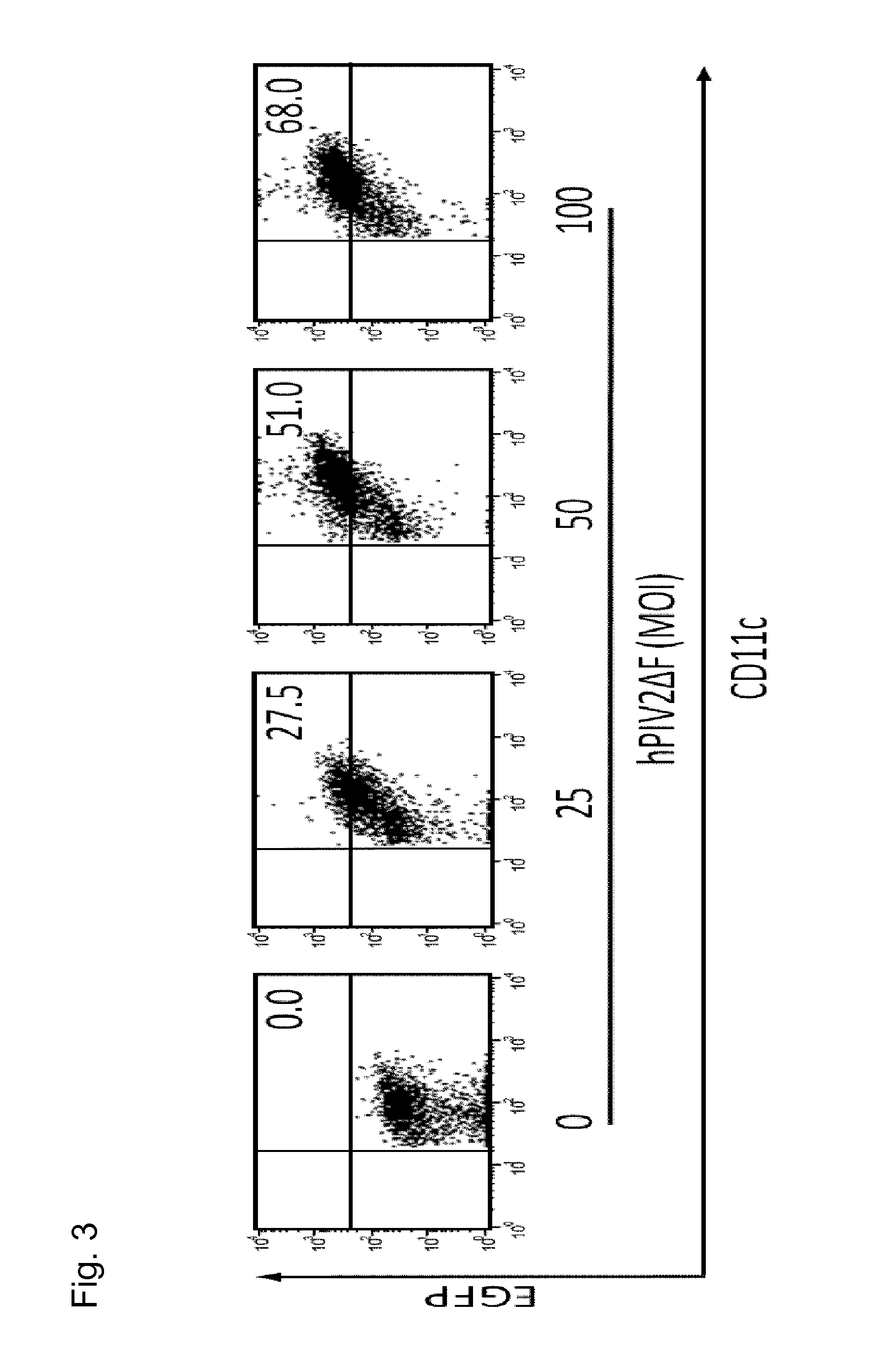Vaccine prepared utilizing human parainfluenza virus type 2 vector
- Summary
- Abstract
- Description
- Claims
- Application Information
AI Technical Summary
Benefits of technology
Problems solved by technology
Method used
Image
Examples
example 1
Confirmation of Transgene Expression in African Green Monkey Cell (Vero Cell) and Mouse Cell (NIH3T3 Cell) Using hPIV2 / ΔF
[0068]Vero cells or NIH3T3 cells were cultured in a 96-well plate such that the cells became a monolayer at the time of vector infection. hPIV2 / ΔF harboring GFP gene was diluted up to 108 from the undiluted solution. This vector does not yield an infectious vector and therefore exhibits GFP fluorescence only in primarily infected cells. The virus dilutions were each added at 1 / 10 of the amount of each cell culture solution, followed by culture for 3 days.
[0069]As a result, the GFP fluorescence was confirmed in the Vero cells and the NIH3T3 cells when 101 to 107 vector dilutions and 101 to 104 vector dilutions, respectively, were added thereto (FIG. 1).
example 2
Confirmation of the Number of Multiplied Vector Copy in Human and Mouse Dendritic Cell Using hPIV2 / ΔF
[0070](Preparation of Human Dendritic Cells)
[0071]Under the code of ethical conduct, CD14-positive cells were recovered from the peripheral blood of a healthy person. At cell culture days 1, 4, and 7, 50 ng / mL GM-CSF and 25 ng / mL IL-4 were added to the culture solution to culture the cells. The cells cultured for 8 days were infected at a multiplicity of infection (MOI) of 25, 50, or 100 by hPIV2 / ΔF harboring GFP gene. The N gene domain portion of hPIV2 in the cells thus infected for 3 days was subjected to quantitative PCR to measure the number of genome copies.
[0072](Preparation of Mouse Dendritic Cells)
[0073]Under the code of ethical conduct, the bone marrow was recovered from each of the femurs of B57BL / 6 and BALB / c mice and cultured (RPM-1640 medium, 10% FBS) after removal of debris. Every two culture days, the culture solution was replaced with a fresh medium, and GM-C
example 3
Confirmation of Infection Efficiency in Dendritic Cells Using hPIV2 / ΔF
[0075]Under the code of ethical conduct, CD14-positive cells were recovered from the peripheral blood of a healthy person. At cell culture days 1, 4, and 7, 50 ng / mL (in terms of final concentration) GM-CSF and 25 ng / mL (in terms of final concentration) IL-4 were added to the culture solution to culture the cells. The cells cultured for 8 days were infected at a multiplicity of infection (MOI) of 25, 50, or 100 by hPIV2 / ΔF harboring GFP gene.
[0076]Under the code of ethical conduct, the bone marrow was recovered from the femur of B57BL / 6 and cultured (RPM-1640 medium, 10% FBS) after removal of debris. Every two culture days, the culture solution was replaced with a fresh medium, and 20 ng / mL (in terms of final concentration) GM-CSF and 20 ng / mL (in terms of final concentration) IL-4 were added thereto. The cells cultured for 8 days were infected at a multiplicity of infection (MOI) of 25, 50, or 100 by h
PUM
| Property | Measurement | Unit |
|---|---|---|
| Structure | aaaaa | aaaaa |
| Antigenicity | aaaaa | aaaaa |
Abstract
Description
Claims
Application Information
 Login to view more
Login to view more - R&D Engineer
- R&D Manager
- IP Professional
- Industry Leading Data Capabilities
- Powerful AI technology
- Patent DNA Extraction
Browse by: Latest US Patents, China's latest patents, Technical Efficacy Thesaurus, Application Domain, Technology Topic.
© 2024 PatSnap. All rights reserved.Legal|Privacy policy|Modern Slavery Act Transparency Statement|Sitemap



